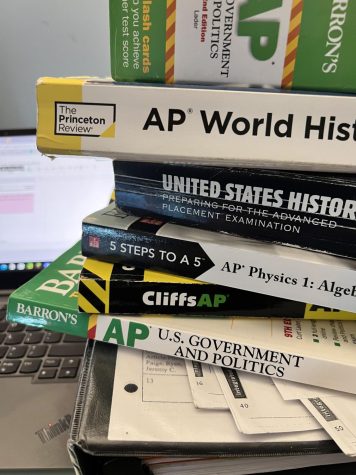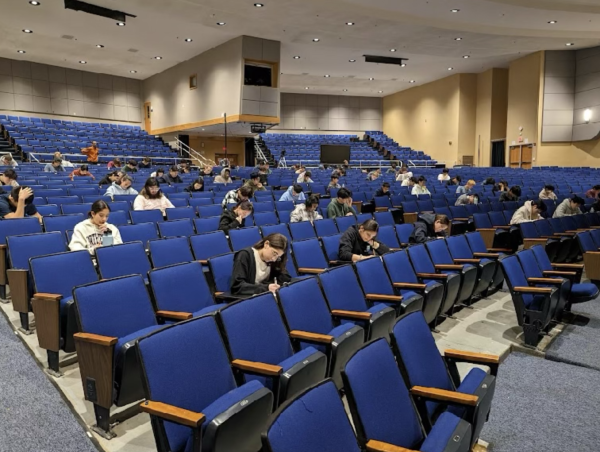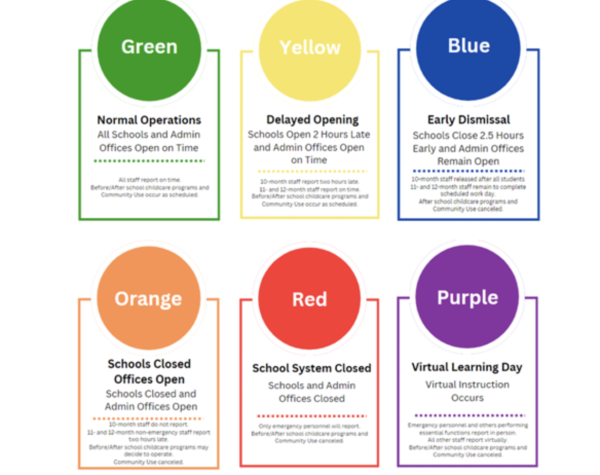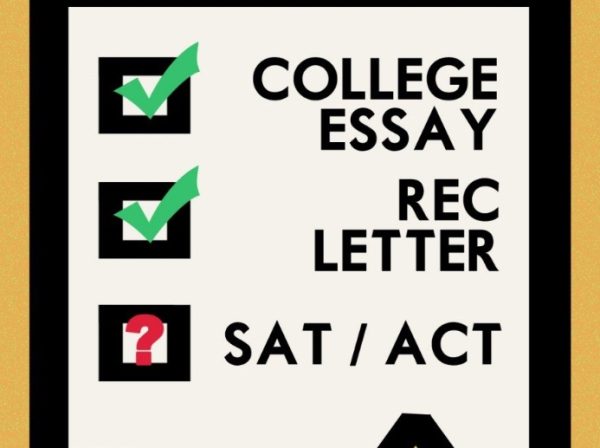A little larger than usual: overcrowding at WCHS
Students in Mr. Lee’s fourth period have an extremely large class. WIth over 36 students, the overcrowding in the class can greatly affect Lee’s attention and ability to work with all of his students equal.
October 21, 2019
At the beginning of the 2019-2020 school year, students noticed that classes felt a little bigger than usual. In fact, classes are a lot bigger than usual. WCHS now suffers from an overcrowding problem in some classes, a huge issue that must be dealt with for the sake of the quality of education that students receive.
According to a 2016-2017 report by the Maryland State Department of Education, the average Md. high school class size was 18.75, with 46 percent having class sizes less than 18 and around 50 percent having class sizes larger than 18. However, during the 2017-2018 WCHS school year, the average English class size was 26 students and the average size for classes under the category “Other” was 26.3 students.
Overcrowding has many negative consequences to both students and staff. It may be unclear why this issue is presenting itself now, but almost everyone is aware of the damage.
One main issue of overcrowding is the larger student to teacher ratio. In previous years, students have complained about having to hold their hands up for too long to ask a question or having to wait in line for a while to get something checked by a teacher. Now, with some class sizes reaching 40 students per class and only one teacher to work with all of them, there is a disconnect starting to form. Trying to get the teacher’s attention or help when 39 other students are struggling with the same concept can be overwhelming to a teacher and harmful to a student’s success.
Students should be able to have a five minute chat with a teacher about how to improve a paper or solve a problem, but if a teacher is rushing to get to all the other students that need help, a student may not get the most out of a question or conversation. The job of a teacher is to be there for the students and help them when needed, but if a teacher cannot guarantee this help because their focus is split between 30 to 40 students, both student confidence and success levels drop.
While the effects on students are dramatic, teachers are also greatly impacted. Teachers want students to feel like they are getting the help they need, but teachers also want to be able to all their students, which results in rushing one student to get help another, which causes the cycle to repeat among the entire class.
A 1993-1994 study on four overcrowded schools in New York City showed that compared to schools at or below normal classroom size, students in overcrowded conditions were scoring lower on math and reading exams. During that school year, 82 percent of the high schools were overcrowded and the four schools in that study were 130 percent overcrowded. The ratio of students passing the reading and math tests were two to nine percent points lower than in schools with normal or below average classroom sizes.
Large class sizes even make life harder for a teacher outside of the classroom. By filling up classes, there are more students whose work must be graded, which takes more time for the teacher and then it takes longer for a student to receive their work and review their mistakes. If a teacher now has 35 students per five classes, they have to grade 175 quizzes or papers before the next assignment so that a student has time to review their mistakes and improve.
However, if a student does not get their quiz back until the day before a test, they will not have ample time to review their work and study their mistakes so that they can guarantee success on the test.
Many students like to review their work with a teacher during lunch or after school, but if all of a teacher’s students are trying to review their work at the same time, then once again the teacher cannot provide enough attention for all of their students to guarantee them the help they need and the success they want to achieve.
Overcrowding creates a constant cycle of struggle and helplessness that repeats and presents itself in similar ways at all times. It is a serious problem that will only continue if not dealt with soon, and the effects will be visible in students success, continuing to cause a drop in WCHS rankings.












